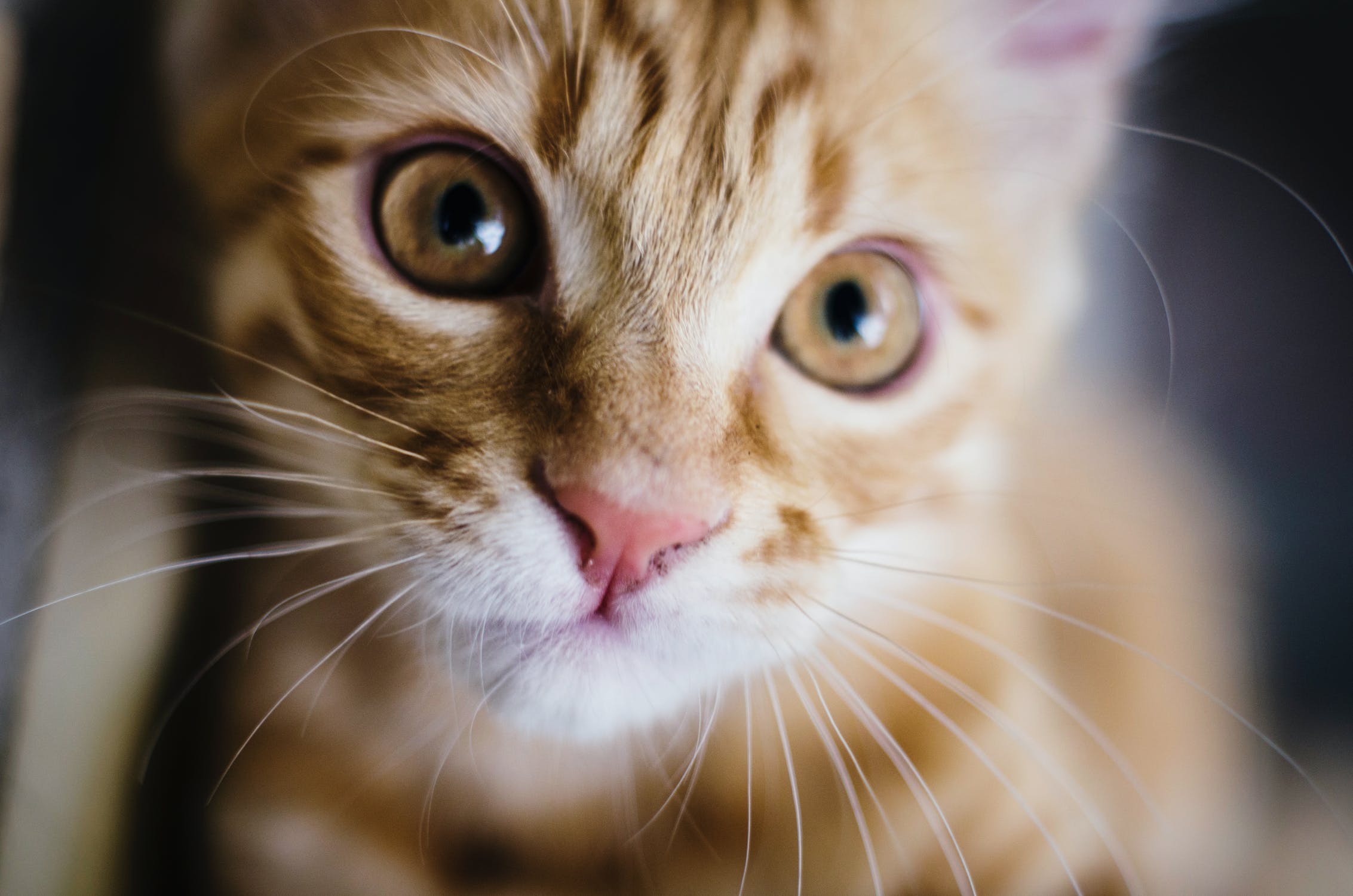Litterbox breakdown: troubleshooting litterbox issues
by Ontario SPCA and Humane Society | Cat Care | March 1, 2022

Guest blog by Dr. Juanita, Scientific Communications Veterinarian with Royal Canin Canada
When I think about cat health, I often think about litterboxes. Yes, you read that correctly, litterboxes. It is not uncommon for our clients to bring their cats to see us because of what they consider to be poor litterbox habits. While I don’t disagree that it can be incredibly frustrating when a cat doesn’t use their litterbox, we first must make sure that their litterbox situation is appropriate for them – and that, my friends, is the human’s responsibility.
Cats have specific needs
Have you ever wondered why your veterinarian asks you how many litterboxes you have and where they are? Well, we do this for good reason and not just because we love cats and want to have litterboxes all over the house. Cats have very specific needs that need to be met if we want them to live harmoniously with us. Those needs are:
- A safe place
- Multiple and separate resources
- Positive and predictable interactions
- Opportunity for play and predatory behaviours
- Respect for their sense of smell
- Individualized nutrition
For the purposes of this blog, I want to focus on three of these needs. The need for safe spaces, multiple and separate resources, and respect for their sense of smell. The degree to which you need to strive to meet these needs will depend on your cat and his or her personality.
How many litterboxes do you have?
In general, cats tend to be more solitary creatures than dogs and most prefer to not share anything directly with another pet. They are a bit like toddlers in that sense. What this means is that they need their own access to food and water, but also to their litterboxes, and they want to feel private when they are there. I can’t say that I blame them either; I am also not a fan of public bathrooms, although ironically, my cat feels that it is his right to join me when I am there.
So, if your cat is not using the litterbox, the first question I will ask you is: how many litterboxes do you have? Ideally, you have one more litterbox than you have cats. That way there is always a bathroom that can be accessed by a shy or nervous cat. While you may not see it, cats can bully one another with just their presence and so a more dominant cat can position itself between the resource (as in the litterbox) and a less dominant cat in the house.
Where are the litterboxes located?
This takes me to the second question that I will ask which is: tell me where your litterboxes are located. The where is as important as the how many. If you just line up all your litterboxes side-by-side in the same room, then that bully cat can now guard all of them at the same time. This may force your shy cat to toilet in less desirable places in the house. So, let’s make sure your litterboxes are dispersed throughout your house and make sure that there is one on each level. We don’t want to make the old arthritic cat climb the stairs just to pee, nor do we want to force our cat to travel a narrow pathway, which can be blocked by another pet like that dark, blind, alley that we would likely avoid if it were us.
The nose knows
This takes us to the next important environmental need to be met for our cats; respect for their sense of smell. After all, did you know that a cat’s sense of smell is 12 times more sensitive than our human sense of smell? How do you think this relates to litterboxes? The obvious answer is litterbox cleanliness. If you can smell it, then your cat is most likely completely disgusted by the stench. At the very least, litter boxes should be scooped daily, if not twice daily (particularly if you live in a small apartment with your feline friend).
How do you feel when you have to go to a public washroom, and it is “dirty”? I can’t speak for everyone, but unless I can find a clean stall I will often just turn around and leave the washroom in search of a clean one. Your cat, on the other hand, often doesn’t have the ability to leave and go find another clean bathroom, so he may create his own in a place which, in his mind, is much cleaner. Hint: while we humans might prefer that scented cat litter or want to place an air freshener next to the litterbox to mask the smell, this might be overwhelming (and unpleasant) for our olfactory superior feline.
Consider litterbox placement
Additionally, think about the placement of the litterbox from the perspective of your cat. How many of us don’t want the esthetic of the litter box or pet food bowls in the main living spaces, so we end up hiding them both in a room that would generally not be used often (hello laundry room, spare bathroom, or basement)? While appealing to us, these may not be the best places for our cat.
If we place both our cat’s food and toilet in the same room, wouldn’t that be like putting your kitchen table in your bathroom? Please don’t ask your cat to eat and toilet in the same room. No matter how good that food smells, if your cat can still smell the bathroom, then all food can be unappetizing. The laundry room is also not ideal when you consider this placement from your cat’s eye view, those loud, shaking, odd smelling (to the cat) mechanical beasts could be terrifying. In short, a quiet, low traffic area is the best place for litterbox placement to keep our cats feeling safe while they relieve themselves.
Underlying behavioural issues
Okay, so what if we have our three litterboxes, which are cleaned daily for our two cats and located on different floors of the house, and our cat is continuing to not use the litterbox? The next question that my meandering veterinary mind has is: why doesn’t this cat want to use the litterbox?
There are several reasons that this might occur. Behavioural problems can arise when specific needs are not being met, preferences not being accounted for, or there are changes in the household. For instance, this could be indicative that perhaps we are forcing a less affectionate cat into forced cuddles and his lack of litterbox etiquette is actually a sign of stress. If your kitty doesn’t like physical attention and someone in the household is forcing it, then this may be their way of saying that they would prefer more limited physical interactions with you.
Another example would be, does your cat always urinate or defecate in a particular spot? If so, your cat may be using urine and feces to “mark” areas within the home that they consider to be their own space and it is a warning to other pets to not enter that space. If this is the case, then maybe Fluffy is not meant to live in a multi-pet household or she needs a portion of the home which is hers and hers alone and the other pets do not have access to it. This is often the case if you have a pet who, of their own volition, chooses to only stay in a very limited part of your home. Your veterinary team can help you work through behavioural issues that may be leading to poor litterbox habits.
Is accessibility an issue?
We should also make sure that your cat can physically get in and out of the litterbox before presuming that your cat is just refusing to use it. If your cat is obese or has arthritis, they may not be able to climb over a tall litterbox edge and may resort to using the floor right beside the litterbox if that is all that they can access.
Litter texture matters to some cats
You might also consider texture preferences for your cat’s litter. Most of us choose to purchase clumping litter as it is easy to clean up and most cats seem to like the texture for burying their business; that said, there are some cats who prefer alternative textures, so some experimentation may be needed before you find a texture that your cat likes.
Underlying medical conditions
Finally, we cannot rule out the possibility that there is a medical reason that your cat is choosing to not use the litterbox. In many cases, a cat who has experienced pain while in the litterbox will refuse to use one. The most common reasons we see are cats who are constipated and uncomfortable or cats who have bladder issues. If you notice your cat straining or crying out while in the litterbox, that is a key sign that they are uncomfortable and need a visit with your vet.
Once we sort out why they are straining in the first place, we can manage that pain so that your kitty doesn’t develop an aversion to using the litterbox. Nothing like a bad experience to make you not want to go somewhere again. It takes multiple positive experiences to overcome one bad one, and the same goes for your cat and their litterbox. Your veterinary team is the best source of medical advice for your cat.
Additional resources
In closing, if my musings have been very interesting to you, here are some great resources where you can go and look for additional information on your cat’s environmental needs.
https://catfriendly.com/cat-friendly-homes/what-your-cat-needs-to-feel-secure/
https://www.cathealthy.ca/educational-materials/
https://indoorpet.osu.edu/cats
 Dr. Juanita currently works as a Scientific Communications Veterinarian with Royal Canin Canada. A career-long educator, she relishes teaching both the home-dwelling humans who are owned by dogs and cats, as well as the veterinary professionals that keep the animal masters healthy. Much like the cat that came back, after several years in private, small animal practice she returned to her alma mater, the Atlantic Veterinary College as a clinical faculty member. In 2010, Juanita transitioned to teaching in Industry. She now shares healthful, practical, and accessible pet nutrition recommendations with all who serve the pet masters. Juanita is currently owned by an imperious mini, wirehaired Dachshund as well as an alien overlord that masquerades as a cat.
Dr. Juanita currently works as a Scientific Communications Veterinarian with Royal Canin Canada. A career-long educator, she relishes teaching both the home-dwelling humans who are owned by dogs and cats, as well as the veterinary professionals that keep the animal masters healthy. Much like the cat that came back, after several years in private, small animal practice she returned to her alma mater, the Atlantic Veterinary College as a clinical faculty member. In 2010, Juanita transitioned to teaching in Industry. She now shares healthful, practical, and accessible pet nutrition recommendations with all who serve the pet masters. Juanita is currently owned by an imperious mini, wirehaired Dachshund as well as an alien overlord that masquerades as a cat.
Categories
Testimonial
Dogs only ask for your love and attention
Dogs only ask for your love and attention, nothing else. Thank you for everything you do!
